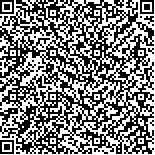王盛,顾昭华,龚晨,罗予,王彤.新型手臂吊带对脑卒中偏瘫患者肩关节半脱位的纠正作用及对转移能力的影响[J].中华物理医学与康复杂志,2016,38(2):122-125
扫码阅读全文

|
| 新型手臂吊带对脑卒中偏瘫患者肩关节半脱位的纠正作用及对转移能力的影响 |
|
| |
| DOI: |
| 中文关键词: 脑卒中 肩关节半脱位 吊带 |
| 英文关键词: Stroke Shoulder subluxation Slings |
| 基金项目:江苏省医学重点学科-康复医学(XK201110) |
|
| 摘要点击次数: 4007 |
| 全文下载次数: 6744 |
| 中文摘要: |
| 目的观察新型手臂吊带对脑卒中偏瘫患者肩关节半脱位的纠正作用及对患者转移能力的影响。 方法共选取30例屈肘肌张力不高(改良Ashworth分级小于2级)并伴有肩关节半脱位的脑卒中偏瘫患者,分别在静态站立位下、10min坐站训练中及20min步行训练中采用3种方式(包括无任何承托及使用网袋式肩吊带或新型手臂吊带)处理偏瘫侧上肢,采用食指触诊法评估吊带对偏瘫患者肩关节半脱位的影响,并采用秒表测量上述2种吊带对患者5次坐站计时测试(FTSST)及站起走计时测试(TUG)结果的影响。 结果在静态站立位下,网袋式肩吊带及新型手臂吊带的治疗效果一致,均能有效纠正患者肩关节半脱位;经10min坐站训练后,发现新型手臂吊带对肩关节半脱位的纠正作用明显优于网袋式肩吊带(P<0.05),而网袋式肩吊带的纠正作用不显著(P>0.05),患者容易出现肩关节半脱位;经20min步行训练后,发现新型手臂吊带及网袋式肩吊带均能有效承托肩关节(P<0.05),并且以新型手臂吊带的纠正作用更显著(P<0.05)。与网袋式肩吊带比较,新型手臂吊带能有效减少坐站转移时间(P<0.05),而2种肩吊带对脑卒中偏瘫患者TUG计时结果均无显著影响(P>0.05)。 结论新型手臂吊带能有效纠正脑卒中偏瘫患者肩关节半脱位,同时对患者转移/移动能力提高可能具有积极作用。 |
| 英文摘要: |
| Objective To explore the effects of the neotype hand-arm sling on shoulder subluxation and transferring movement in hemiplegic stroke patients. MethodsThirty hemiplegic stroke survivors with shoulder subluxation and poor elbow flexor muscle tone (<2 on the Modified Ashworth Scale).were selected and randomly divided into three groups. Group 1 was trained in static upright standing, plus 10 min of sit-to-stand training and 20 min of walking training with no support for the hemiplegic, subluxed shoulder. Group 2 did the same training using a bag-type shoulder sling, and group 3 used the neotype hand-arm sling. Index finger palpation was used to evaluate the degree of shoulder subluxation, and the Five Times Sit-to-Stand (FTSST) and Timed Up-and-Go (TUG) times for the three groups were compared. ResultsIn the static standing training, both the bag-type sling and the neotype hand-arm sling could effectively reduce shoulder subluxation. However, after 10 min of sit-to-stand training the neotype hand-arm sling was found to be significantly superior to the bag-type shoulder sling in improving shoulder subluxation, with the latter having no effect on shoulder subluxation. In the 20 min of walking training, the neotype hand-arm sling provided significantly more effective support than the bag-type shoulder sling, although both could support the shoulders. Those using the neotype sling had shorter FTSST times, though there were no significant differences in the average TUG times. Conclusions The neotype slings can more effectively counter shoulder subluxation in upright stance, especially during sit-to-stand maneuvers and walking. It might have positive effects on transferring ability. |
|
查看全文
查看/发表评论 下载PDF阅读器 |
| 关闭 |
|
|
|